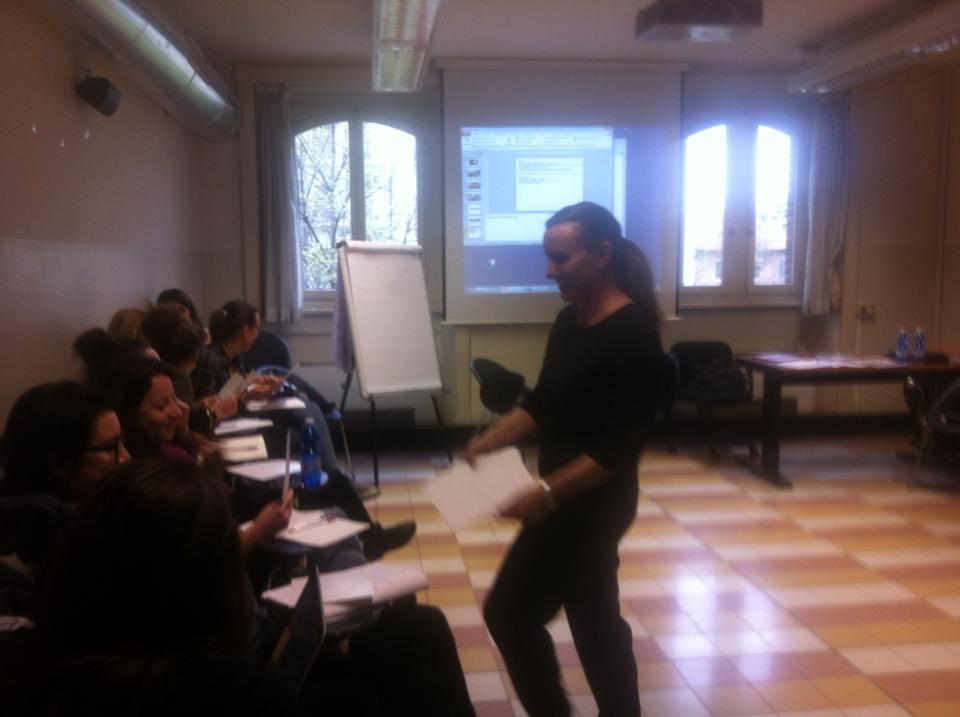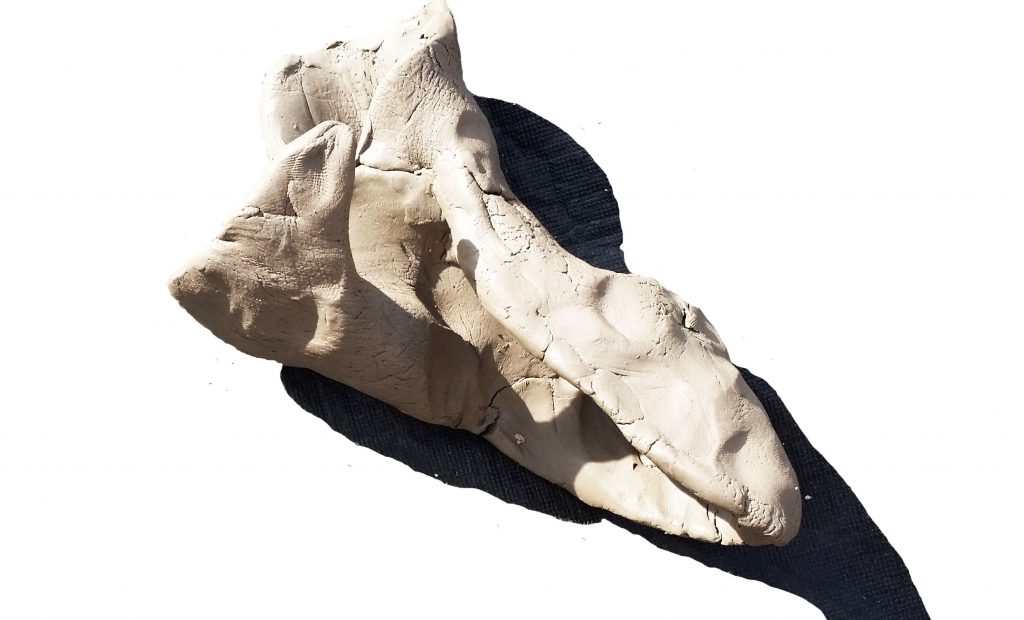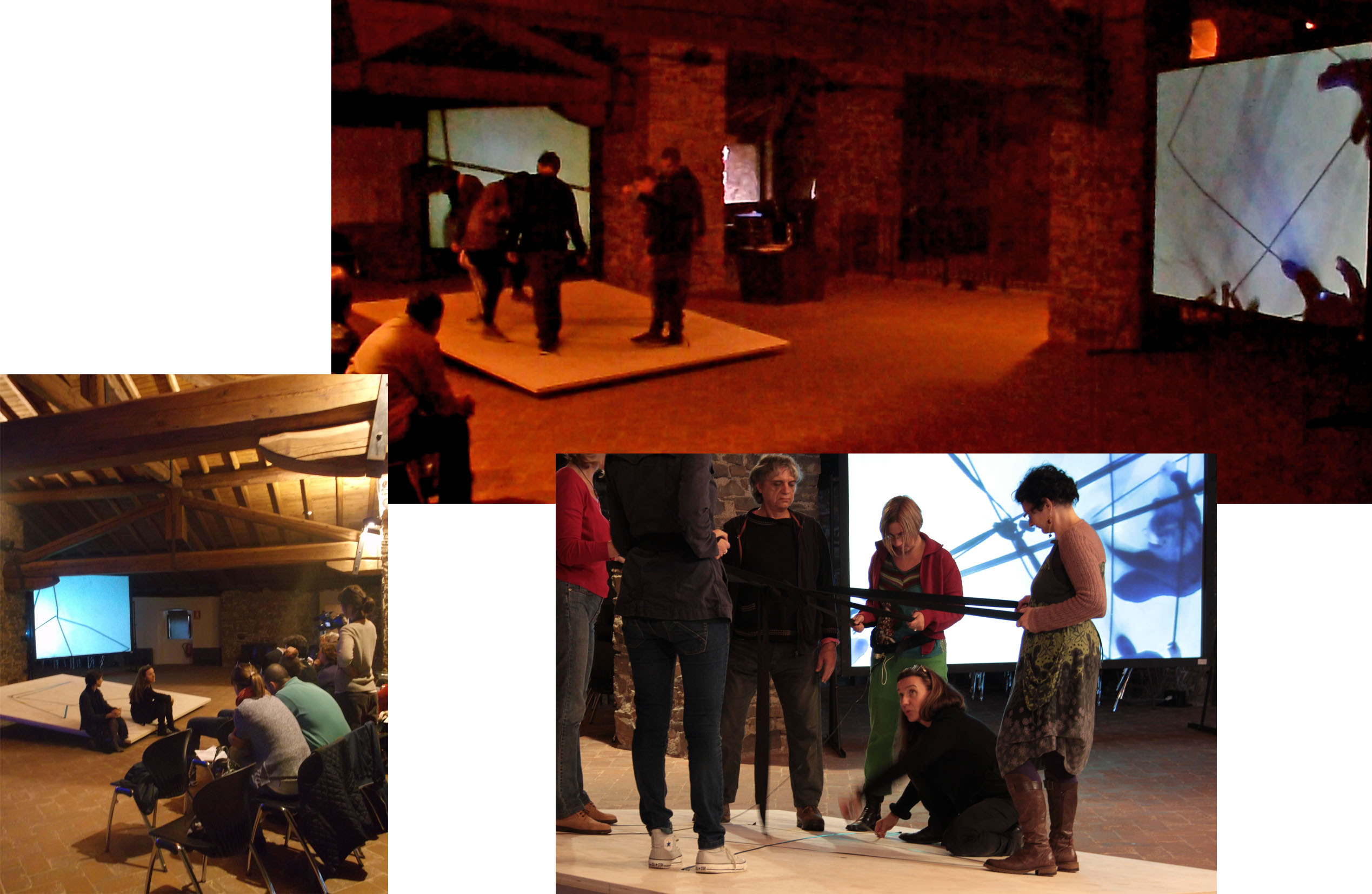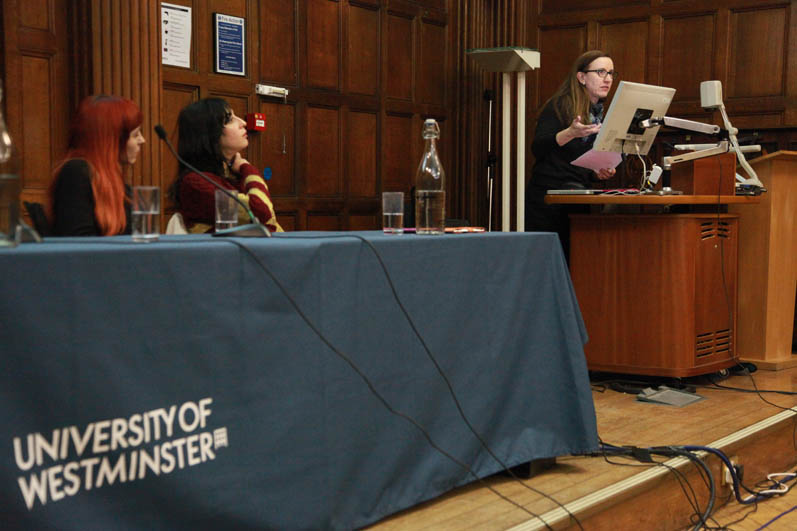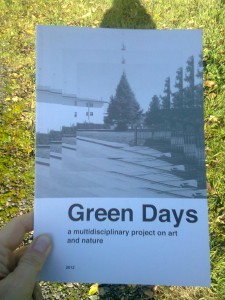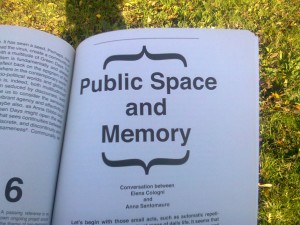operare nello spazio pubblico/making work in public space
Master Progettare Cultura, Università Cattolica Milano,
su invito di
Gabi Scardi e Ivana Ghilardi
30 marzo 2016
Il contesto, da una mail a Ivana e Gabi, pochi giorni prima:
…..il concetto di valore intorno all’approccio partecipato, per inserire il mio interesse sulla memoria in una piu’ ampia visione ecologica e che si spera si possa evincere da una posizione etica insita nel lavoro.
Mi trovavo ieri a bere un te qui a Cambridge con il sociologo e antropologo Paul Connerton, il quale insisteva sui termini endurance, slowness, silence, pause, waiting: durata/resistenza, lentezza, silenzio, pausa, attesa. Partendo da una riflessione sul senso che questi hanno per me, vorrei introdurre il mio lavoro dal suo interno, e cioe’ il mio modo di rapportarmi agli altri che si basa sul vuoto (gap) lasciato per consentire un interscambio….¬† Come nel progetto ‘lo scarto’ (2015, Castelvetrano, Sicilia, e Londra UK), in cui mi sono riferita da un lato alla maieutica reciproca di Danilo Dolci, e dall’altro alla memoria proceduale (‘habit memory’) discussa da Paul Connerton (How societies remember, 1989).
Un interesse per l’esperienza della memoria che risale a quando lasciai l’Italia vent’anni fa, ma che ho affrontato in modo cosciente in rapporto ai luoghi nella serie ‘Menmonic Present, Un-folding’ (2004-05), costruendo ‘una sorta di urbanistica della memoria’ (Aurelio Andrighetto).
Il rapporto tra me (il mio lavoro) e gli altri √® un punto focale nel mio operare, ed √® da sempre alla base di un approccio interdiscipliare e trasversale in cui prendo in prestito strategie e concetti propri di psicologia e sociologia, per elaborare¬† un’ indagine attaverso una practica artistica che ruota intorno al rapporto tra memoria, percezione e spazio/luogo. Da cinque anni in particolare all’interno della piattaforma rockfluid ho affrontato questi temi attraverso progetti site specific e in collaborazione con curatori indipendenti o istituzioni.
Vorrei pero’ approfittare di questa occasione per fare una riflessione che mi permetta di definire un ambito (dai confini necessariamente instabili) per quell’aspetto del processo creativo che mi porta a rapportarmi con gli altri in determinati luoghi, che viene comunemente inteso come public art. E per fare questo vorrei riferirmi ai concetti di: spazio sociale, pratica sociale e pratica spaziale (Henry Lefebvre, Production of Space) ed al processo di attaccamento ai luoghi (Gaston Bachelard). Concetti che cerco di incorporare nel mio lavoro attraverso il dialogo, l’azione e la costruzione di memorie condivise per contribuire a quello che Assman definisce memoria comunicativa (mai tangibile e monumetale) in costante mutamento cos√¨ come la nostra societ√† attuale.
Questo momento di riflessione fa parte del processo creativo in atto per il mio prossimo progetto, che verrà definito quando sarò in residenza al MuseumQuarter a Vienna tra poche settimane.
relativi riferimenti
Cologni, E., (2016) A Dialogic Approach For The Artist As an Interface in an Intercultural Society.  in Burnard, Mackinlay, Powell (Eds). The Routledge International Handbook of Intercultural Arts Research New York, London: Routledge
Cologni, E., (2016) Lo scarto (touch) in #TransActing: A Market of Values, presented by Critical Practice, Camberwell, Chelsea and Wimbledon Graduate School’s Public Programme, July 2015
https://75gropiusartresidency.wordpress.com/2015/10/28/a-modernity-which-forgets-exhibition/
the tea break series at BIBAC
2nd International Conference on
‚ÄėBuilding Interdisciplinary Bridges Across Cultures‚Äô
(BIBAC 2016)
Monday 1st August (10.45-11.30 am)
‘The Tea Break Series: Practicing A Dialogic Approach/The Inside And The Outside’
Elena Cologni with Paul Connerton
 
to listen to oneself listening… (Dolci 1988:144)
Bodily practices of a cultural specific kind entail a combination of cognitive and habit-memory (Connerton, 1989: 88)
Elena Cologni has met with Paul Connerton a few times over a cup of tea, to discuss shared interests from the artistic and the sociological contexts, around the body, memory, and place. This session, including a practical element, will retain the  informal approach and open the discussion to participants.
Can we learn to listen? Or allow silence to speak to us? Can we visualize the space among us and inhabit it with our memories? these are among the questions raised by, and embedded in, Cologni’s participatory art project ‘lo scarto’ (2015), which evolved through the relational dynamics within the group. It was informed by the Reciprocal Maieutics Approach (RMA Dolci, 1973), a pedagogic process based on collective exploration of individuals’ experience and intuition. This enabled inter-subjective exchange, the activation of history and memories, and the construction of a narrative related to the mass migration phenomenon and the related current intercultural process taking place in South of Italy. In Cologni’s subsequent project Lo Scarto (Touch) (2015), participants connect in pairs through soft clay. This eventually becomes distorted in the process of manipulation, while defining the space between them into unique objects. Such a socially negotiated practice allows embodied memories (Connerton 1989), carried in gestures and habits, to be exchanged as a form of tacit knowledge of one another conveyed through touch.
This form of engagement, of prelinguistic dialogue, is a reciprocal dynamic of question and response. A ‚Äėquestion‚Äô already implies an openness towards the other’s background and differences (cultural, gender). In particular, in the encounter the question informs the blank space between hands, which has been inhabited. The distance between two people, a materialized topography, a ‘place memory’ (Connerton 2009),¬† acts as point of contact, exchange and separation.
Participants feel and listen in order to respond, a necessary condition for the Reciprocal Maieutic Approach (Dolci 1988, Cologni 2016) as a way of sharing one‚Äôs own experience to inform the other‚Äôs. This is also how ‚Äúcommunicative memory works, through the integration of different traditions, an aspect of which will be lost or discarded along the way‚Ķ ‚Äėlo scarto‚Äô, offcut, scrap, residue of culture‚Ķ‚ÄĚ (Cologni 2016).
Paul Connerton will respond to Cologni’s participatory practical exercise and explore some aspects of the relationship between the inside and the outside in society and with respect of the human body. He will include some of the following topos:
the aperture of the body; Lucy Harigary critique of Aristotle conception of the body as a container; the idea of internalization as developed by psychoanalysis; agrophobia; anorexia; Batkin’s idea of the grotesque body; and some features of female adornment, which, though external to the body nevertheless have radically damaging effects on the inside of the body, that is to say bone structures.
references
art projects
Cologni, E., lo scarto (touch), #TransActing: A Market of Values, presented by Critical Practice Research Cluster, Camberwell, Chelsea and Wimbledon Graduate School’s Public Programme, University of the Arts London, July 2015
Cologni, E. (2015) lo scarto, Castelvetrano, Sicily (IArt Residency Unesco, European funding)
book publications
Cologni, E. (2016) ‘A Dialogic Approach For The Artist As an Interface in an Intercultural Society’. in Burnard, Mackinlay, Powell (Eds). The Routledge International Handbook of Intercultural Arts Research New York, London: Routledge
Connerton, P. (1989). How Societies Remember. Cambridge: Cambridge University Press
Connerton, P. (2009) How Modernity Forgets. Cambridge: Cambridge University Press
Dolci, D. (1988) Dal trasmettere al comunicare, Non esiste comunicazione senza reciproco adattamento creativo, Casale Monferrato: Ed Sonda
Cologni’s research ¬†is generously funded by a Grants for the Arts, Arts Council England
Elena Cologni has a PhD in Fine Art from University of the Arts, London Central Saint Martins College, 2004 (CSM). Her academic positions as artist include a Post-Doctorate Fellowship at CSM (Arts and Humanities Research Council UK 2004/06), a Research Fellowship at York Saint John‚Äôs University (Arts Council of England, 2007/09), she contributes to the Creativities in Intercultural Arts Network (University of Cambridge). Process is central to her ‘research as art practice’ approach, which is also intrinsically interdisciplinary, and she often collaborates with academics and professionals from other disciplines. Her work include dialogic undertakings resulting in drawings, sculptures, video and text, and has been exhibited in the US, Europe and the UK. She is the founder and director of Rockfluid, umbrella interdisciplinary project outcome of a residency at the University of Cambridge, Faculty of Experimental Psychology, awarded with two Grant of the Arts, Arts Council of England, and Escalator Visual Art Retreat at Wysing Arts Centre, Escalator live art, Colchester Arts Centre. This includes many international site specific interventions, investigation the relationship memory, perception and place, including the upcoming at MuseumQuartier Vienna, Austria, and at Centre for Family Research, and New Hall Collection, Cambridge.
Paul Connerton is a research associate in the Department of Social Anthropology at the University of Cambridge. His books include How Societies Remember (Cambridge University Press, 1989), How Modernity Forgets (Cambridge University Press, 2009), and The Spirit of Mourning: History, Memory and the Body (Cambridge University Press, 2011). Connerton’s first book, How Societies Remember (1989), opened the discussion of collective memory (per Maurice Halbwachs and others) to include bodily gestures, finding in clothing, manners, musical performance, and other socially negotiated practices locii where memory is “silted” (to use his verb) into human corporeal consciousness and praxis. Connerton followed up this work with How Modernity Forgets (2009), which emphasizes what Connerton calls “place memory,” or memory that is dependent upon topography and particularly upon topography as it relates to the human body. Connerton argues that modernity is characterized by a particular sort of forgetting “associated with processes that separate social life from locality and from human dimensions: superhuman speed, megacities that are so enormous as to be unmemorable, comsumerism disconnected from the labour process, the short lifespan of urban architecture, the disappearance of walkable cities
dialogic, interdisciplinary and intercultural
Cologni, E.(2016). ‚ÄėReciprocal Maieutics: An Approach For The Artist As an Interface In an Intercultural Society‚Äô. In Pamela Burnard, Elizabeth Mackinlay, Kimberly Powell, The Routledge International Handbook of Intercultural Arts Research, London, New York, Routledge Publishing
to listen oneself listening…¬† (Dolci 1988:14
Remembering is a realization of belonging, even a social obligation  (Assmann, 2008: 114)
Can we learn to listen? Or to allow silence to speak to us? Can we visualize the space among us and inhabit it with our memories? These are among the questions raised by, and embedded in, my recent participatory art project ‘lo scarto‘, which evolved through the relational dynamics within the group. It was informed by the Reciprocal Maieutics Approach (RMA Dolci, 1973), a pedagogic process based on collective exploration of individuals‚Äô experience and intuition. This enabled inter-subjective exchange, the activation of history and memories, and the construction of a narrative related to the current intercultural process taking place in Italy.
My creative process is here discussed as research as art practice, in relation to socially engaged and dialogic art, and communicative memory, to act as an interface in an intercultural society.
Yale University Radio WYBCX
Inteviewed by Brainard Carey on her interdisciplinary art practice and  research,
access here
dialogic and interdisciplinary
I have organised a roundtable discussion on the 24th of October 2014, part of the conference Building Interdisciplinary Bridges Across Cultures, University of Cambridge.
The roundtable will address dialogue in different forms, as performative, and in some case pre-linguistic, to inform interdisciplinary approaches, including from artistic, curatorial and education practices and research. Dialogic dynamics, in relation to the term Littoral (from geography, by Kaster, 2004), defining an unstable boundary, and considering micropolitics, in communities and physical locations. The contributors  are:
Circuit Cambridge (https://circuit.tate.org.uk/)
¬†Elena Cologni, artist and theoretician, she has a PhD from the University of the Arts London, Central Saint Martin’s College of Art and Design, received awards for her artistic research from the Arts and Humanities Research Council, and the Arts Council of England, also winning Escalator live art and Visual Art. Residencies include: Creative Lab at Centre for Contemporary Art in Glasgow 2006-2008, Yorkshire Sculpture Park 2009, and Faculty of Experimental Psychology, University of Cambridge (2011-2013).¬† The main outcome of the latter is the umbrella interdisciplinary project ROCKFLUID ( Arts Council of England 2011/13 and 2014/15)¬† http://rockfluid.com
Julian Klein ,  artist, Director of  !KF (Institute for Artistic Research http://www.artistic-research.
Anna Santomauro is the Co-Founder and Chief Curator with Viviana Checchia of Vessel  a non-profit arts organization devoted to developing critical discourse around pertinent contemporary social, political, and economic issues. Vessel has developed numerous projects in Turkey, Italy, Greece, USA,UK (In Dialogue, Nottingham is only one of them). VESSEL was the winners of the 2013 ICI and The Dedalus Foundation Research Award for curators, and toured the USA with the aim to investigate different curatorial approaches developed from the exhibition Culture in Action, and to re-contextualize these curatorial practices within the European and Euro-Mediterranean perspective. http://www.vesselartproject.
 Dialogue as in Littoral Art[1] , a term which indicates art with shifting boundaries of knowledge and contexts the meaning of which derives from the subjects involved (artist, participants, collaborators). Littoral is also a word coming from geography and clearly suggesting an idea of territory and site specificity.
http://www.educ.cam.ac.uk/

[1] Grant Kester  , Dialogical Aesthetics: A Critical Framework For Littoral Art  http://www.variant.org.uk/9texts/KesterSupplement.html accessed on 09/09/2013 also check Grant Kester  2011 The One and the Many: Contemporary Collaborative Art in a Global Context, (Duke University Press)
Bergamo Scienza, SPA(E)CIOUS
SPA(E)CIOUS, Dynamics of collective and individual experiences of memory, space and duration
BERGAMO SCIENZA 2013  ,  Saturday/Sabato 5 & Sunday/domenica 6 ottobre, Porta St Agostino, Bergamo
SPA(E)CIOUS¬†is a form of collaborative peripatetic practice,¬† where produced and shared knowledge informs the artist‚Äôs creative process. It creates the physical and psychological conditions to enhance an¬† awareness of the perception ‚Äď and illusion ‚Äď of time and space in the present. This artistic participatory¬† installation is based on the multidisciplinary approach the project Rockfluid (funded by the Arts Council of England), from a collaboration between artist Elena Cologni and scientist Lisa Saksida (University of Cambridge), in dialogue with curator Caterina Albano (Artakt and Art :science and technology research Group, Central Saint Martins College, London), and where art practice is underpinned by elements of cognitive psychology and philosophy. Hence, here within the relationship Memory ‚Äď Time ‚Äď Perception, the role of memory in the present is seen from a shared perspective (psychology and philosophy of science) including the definition of specious present. Furthermore an unstable platform represents the¬†element of interference with our physical experience.
on vimeo:
introduzione di Elena Cologni  https://vimeo.com/121023317
performance partecipata  https://vimeo.com/121023318
discussione tra Elena Cologni e Caterina Albano con il pubblico https://vimeo.com/121162549
SPA(E)CIOUS: dinamiche di esperienze individuali e collettive di memoria, spazio e durata
SPA(E)CIOUS √® un momento di esperienza condivisa di percezione e memorizzazione dello spazio e del tempo nel presente. L’installazione artistico-scientifica ha lo scopo di creare nel partecipante le condizioni fisiche e psicologiche per aumentare la consapevolezza della percezione di spazio e tempo attraverso esperienze in cui psicologia, disegno, video e perfomance si intrecciano. SPA(E)CIOUS si basa sul carattere multidisciplinare del progetto Rockfluid, frutto di una collaborazione tra l’artista Elena Cologni e la scienziata Lisa Saksida dell‚ÄôUniversit√† di Cambridge, in dialogo con la curatrice Caterina Albano ( Artakt e Art: science and technology research Group, Central Saint Martins College of Art and Design,¬†Londra), che coniuga il processo creativo con la psicologia della cognizione e la filosofia. In particolare l‚Äôesperienza sottolinea il ruolo che interferenze di varia natura possono avere sulla percezione di spazio e tempo nel presente: la variante in questo caso √® rappresentata da una piattaforma instabile su cui vengono proposti gli esercizi¬†
SCUOLE: secondarie di II grado ORARI: sabato 11.00 / 12.00 (2 turni) durata 45 minuti MAX 50 studenti
PRIVATI: 15+ ORARI: sabato 16.00 / 17.00 (2 turni) domenica  11.00 / 12.00 / 16.00 / 17.00 (4 turni) durata 45 minuti MAX 50 persone
Organizzazione: Rockfluid in collaborazione con University of Cambridge
Si ringrazia: BergamoScienza, Arts Council of England, University of Cambridge,  Elena Cologni Circle of Friends
Sponsor principale dell’evento:
assistenti: Laura Crevena,   Silvia Valenti, Sara Ravelli
Westminster University
Exhibiting Performance
My first old fashion style paper delivery after, yes, 12 years….I figured I need to contextualise now.
It was on the document and the quality of the unfinished as political position in my practice, but actually¬†an incredible¬†number of people discovered Philip Auslander now (!), I got hold of that article back in 2006! (well¬† he sent it to me, thanks Philip…)
WARBURGHIANA
GREEN DAYS
Extract from Anna Santomauro interviewing Elena Cologni
A.S. Let’s begin with those small acts, such as automatic repetitive movements that construct maps of daily life. It seems that the idea of distance, that is, the relationship between here and elsewhere, have changed dramatically in recent years, and with it the perception of places. What do you think are the cognitive impacts at the individual and collective level?
E.C.: I think that the current context produces a sense of alienation in¬†the individual, and this¬†is caused by the dominant technological economy,¬†and based on the urgency to reduce the space/time gap, which is typical of today’s system of communication. Assuming that we all share this experience, ROCKFLUID (https://rockfluid.com) represents an attempt to investigate¬†this¬†by creating opportunities to meet in a shared physical space where we undergo an experience, we walk, we move around a certain place, moving our body in space, thereby re-defining it as our own. I’m interested in this type of activity, in relation to psychogeography too, but more as the adoption of relational tactics,¬†¬†rather than as an individual activity,¬† and aimed at sharing the creative process with the participants. In fact, their input builds a web of narratives I witness and adopt. I also believe that raising an awareness of how digital time interferes with our perception of time (subjective time) is a driving force behind the work. One way to do this is by breaking the now-established memory/past relationship. Since we are so obsessed with constantly documenting our lives, the impossibility of doing the same with memory may have become a phobia (…), and I thus¬†would like to introduce a new scenario:¬†that we are able to change our memories when they resurface in the present. Aspect I introduced with a previous work of mine (http://www.elenacologni.com/memory) , and which in this context becomes instrumental for a new definition of ‘place’. This is found specifically in the qualities of instability and transition typical of memory. Furthermore, what frightens me (and which I also¬†do), is how we have become used to confusing the illusion of reality with reality itself. I am aware that this may be a controversial thing to say because it‚Äôs like saying that interaction through technology is not interaction. So let‚Äôs clarify this further. There are two aspects to explore to support my remark: the first relates to how many of us engage in interaction through technology at the same time as, for example, we are on Skype or respond to a message on Facebook… the fact that we can do other things leads us to act in a somewhat schizophrenic manner, which also has a bearing (and this is the second point) on our perception of time or subjective time.
A.S. Going through space implies an evocative, emotional and mnemonic act of appropriation: while on the one hand, in fact, the schizophrenic use of places is a prerogative of contemporary life, on the other, this same attitude leads obsessively to attempts of mapping, collecting traces, documenting, and re-writing. Perhaps this stems from the desire to produce new forms of narrative of reality, or to produce alternative realities. What do you think?
E.C.: The awareness of our position in space in relation to the use of technology has changed our perception of space itself. We’re used to macro-scales (Google Earth), and we don‚Äôt consider our proximities as much anymore. In my project I try to get people to understand this by generating micro-geographies, and the relationship of our body with the space that surrounds it, rediscovering the poetics and politics of everyday life. It‚Äôs one way of customizing resistance to the global landscape context. Through my work personal space is a non-verbal language of inter-subjective spatiality. I believe that this need to document is rather linked to the unconscious awareness of not being entirely in the know with the perception of reality in the present, precisely because paradoxically we want to document it at that very moment. If I look at the screen of my phone while I take a picture, at that moment I cannot see through my eyes the same thing that I am photographing. I have documented that moment, but I have also lost it for ever. I am interested in working on this paradox and the attraction that it exerts on us. The attempt to build another reality is also linked to the disappointment of the created reality and the continuous search for a new reality (another image)… in a sense it‚Äôs what happens in the creative process, it is driven by dissatisfaction.
A.S. Imagine giving birth to a new discipline: individual memory archeology linked to places. It occurs to me that the first layer to be dug up would be that linked to the collective thought which is shared by everybody, and then move on to the perception one derived from the encounter between the senses and objects. Then comes the emotional one, and after that the one for pathways and systems that subject all these aspects to the individual imaginative reinterpretation. What’s art’s place in this scheme? And what short-circuit does this encounter produce?
E.C. The artist listens, but s/he is not a psychologist nor is s/he a priest. It’s a tacit agreement with the participants who know it. They also know that in reality the artist does not listen, but is present and witnesses the moment. Art transforms the essence of these encounters, freeing itself of words and translating what happens into surrounding forms which remain so, continuously in power. In this sense, we’re not talking about further traces, but new realities.
A.S. And if you were to give a definition of “nature”?
E.C. In the traditional sense it implies the difference between what is natural and what is not natural and is artificial. The latter is to be understood in terms of what has been brought into existence by the human consciousness or mind. Or, depending on the context, we can distinguish the term ‚Äúnatural‚ÄĚ from what is unnatural, supernatural or synthetic. The problem is that nothing is natural anymore and thus free from human intervention. To the point that, since the time technology enabled communication travels imperceptibly through the air we breathe, that too is altered by it.
GREEN DAYS  , project by neoncampobase (Bologna), AAA РAudiovisual Artists Anonymous (Brussels), Radar (Loughborough), Fabrica de Pensule (Cluj-Napoca)
The book can be read here http://www.matildesoligno.net/catalog-published-for-green-days%E2%80%93multidisciplinary-project-on-art-and-nature/
MoTA – Museum of Transitory Art
http://www.motamuseum.com

